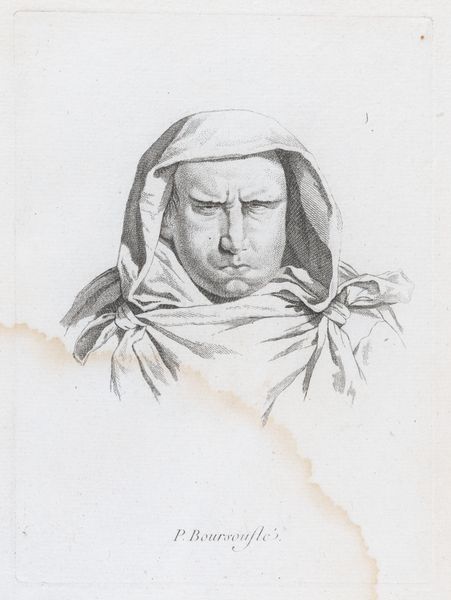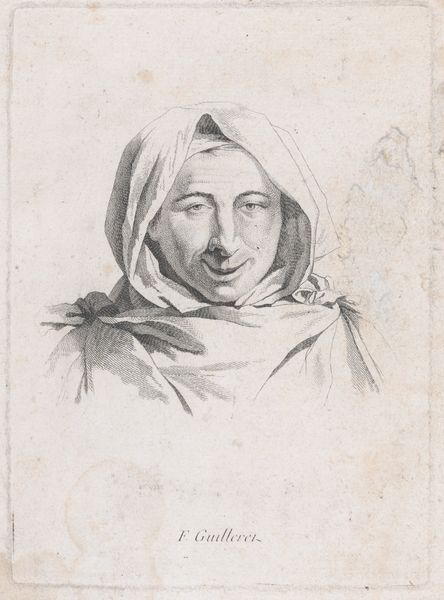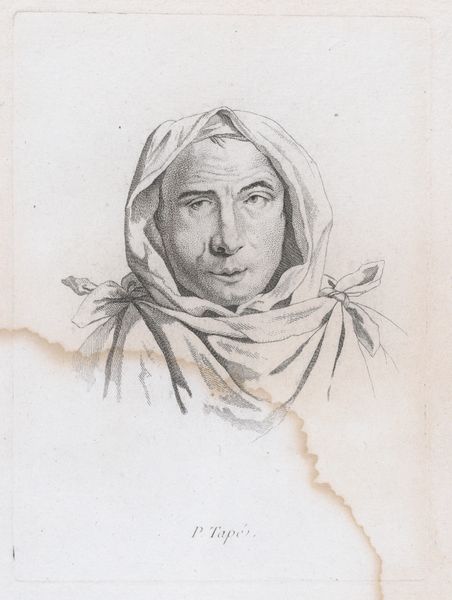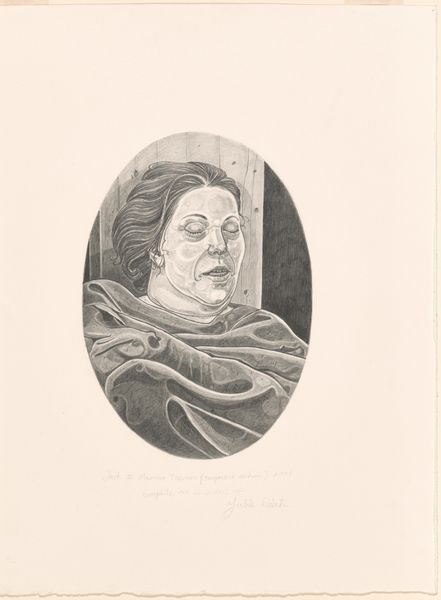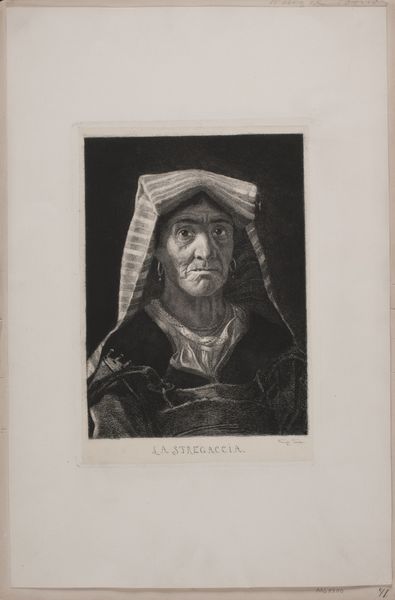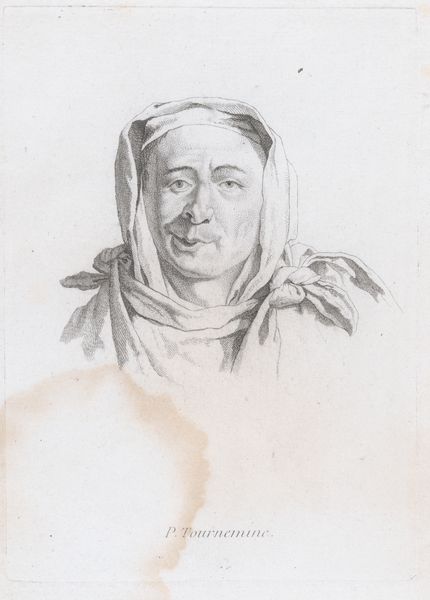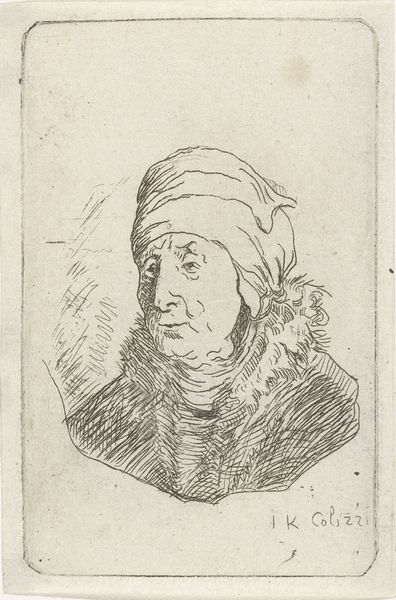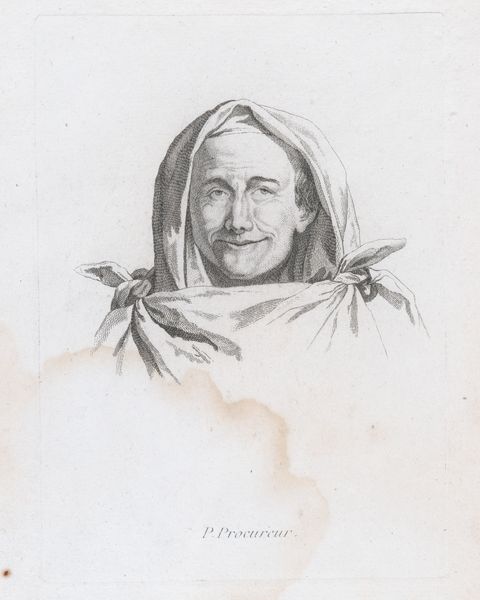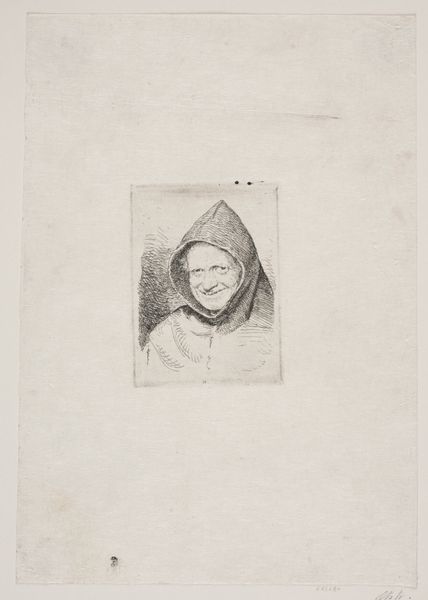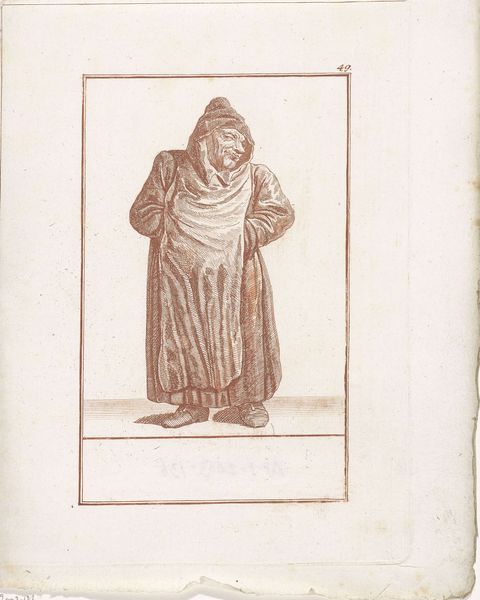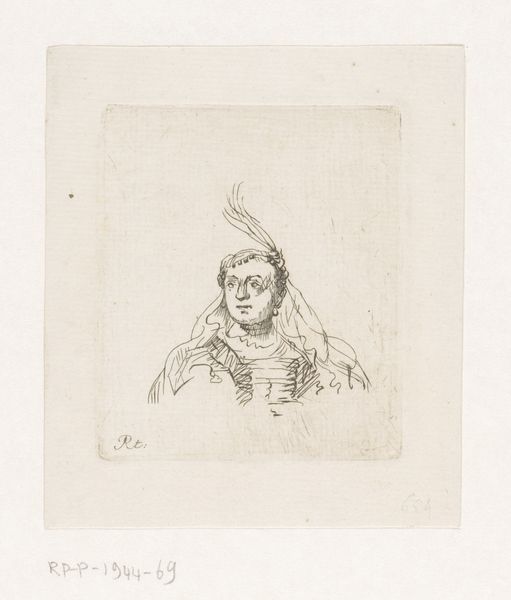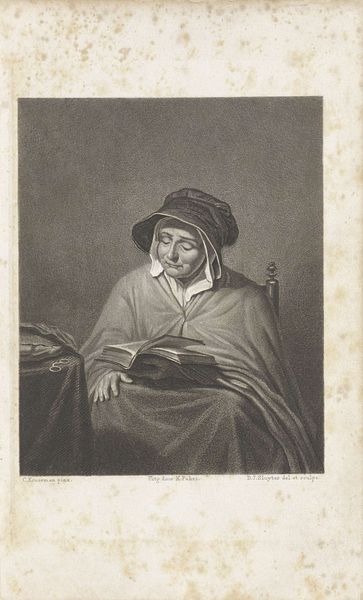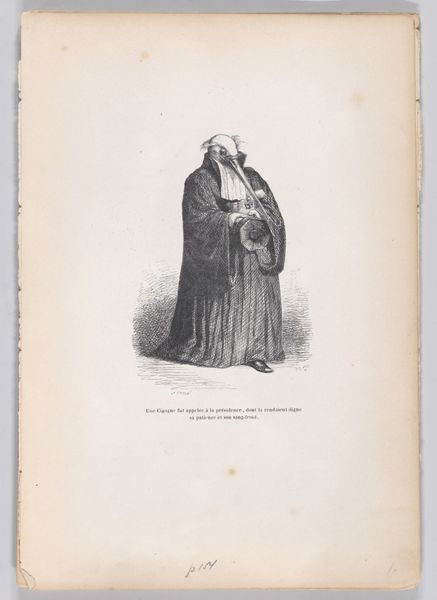
drawing, print, pencil, graphite, engraving
#
portrait
#
pencil drawn
#
drawing
# print
#
pencil drawing
#
pencil
#
graphite
#
portrait drawing
#
engraving
Dimensions: Sheet: 11 1/8 × 7 7/8 in. (28.3 × 20 cm) Plate: 7 5/8 × 5 7/16 in. (19.3 × 13.8 cm)
Copyright: Public Domain
This is Guillaume Thiemet's 'Portrait of P. Barabara,' made using etching, a printmaking technique with a long and fascinating history. The image begins with a metal plate, likely copper or zinc. The artist would have coated it with a waxy, acid-resistant substance, drawing through this coating with a sharp needle to expose the metal underneath. Immersing the plate in acid then 'bites' into the exposed lines, creating grooves. Ink is applied, filling these lines, and the surface is wiped clean. Finally, the plate is pressed onto paper, transferring the ink and creating the print. Look closely, and you’ll see the fine, precise lines that define the sitter’s features, and the subtle gradations of tone achieved through cross-hatching. It's a painstaking process demanding technical skill, and patience. Prints like this were produced in multiples, making images more widely accessible. By understanding the means of production, we can appreciate how this artwork democratized artmaking and image sharing, moving art beyond unique objects for the wealthy.
Comments
No comments
Be the first to comment and join the conversation on the ultimate creative platform.
